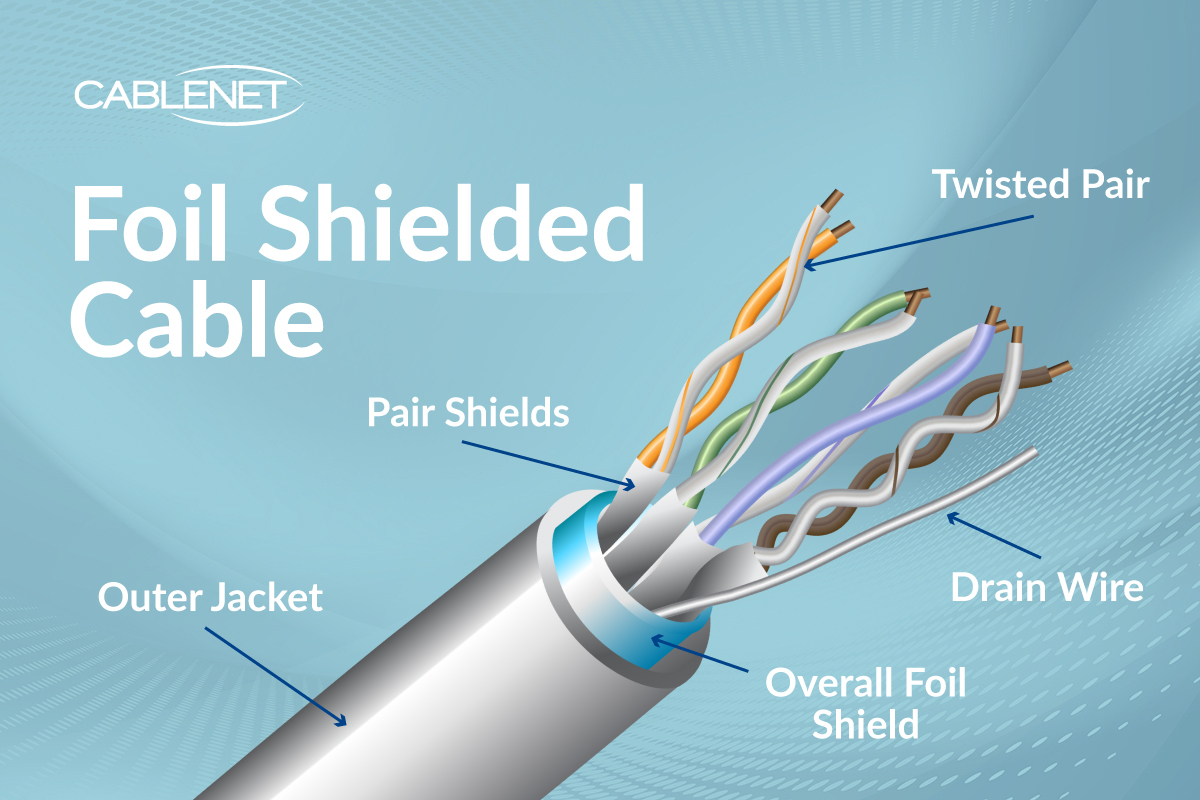Shield vs Unshielded Cables
While shielded and unshielded ethernet cables serve the same purpose, you need to consider a few key differences when choosing cables suitable for your network.
Should you invest in shielded cables, which are more expensive but provide better protection against electromagnetic interference (EMI), or unshielded cables, which are cheaper and offer much lower protection against electromagnetic interference (EMI)? It can be a difficult decision, and by the end of this article, you should be able to make an informed purchasing decision.
Shielded Ethernet Cables
Shielded ethernet cables have a layer of metal shielding around the cable, which protects against EMI (electromagnetic interference) and RFI (radio frequency interference). These cables are generally used in environments with high levels of electronic device interference, such as data centres, manufacturing plants and other industrial settings. The shielding helps minimise the effect of interference, making the signal clearer and more reliable.
The downside of using shielded ethernet cables is that due to their construction, they tend to be more expensive and less flexible than unshielded cables. They also require different connectors than unshielded cables, and the termination method is more complicated, making installation more difficult. However, if you need extra protection against EMI and RFI, investing in shielded cables can be well worth it.

Unshielded Ethernet Cables
Unshielded ethernet cables lack the extra layer of metal shielding found in shielded cables. As a result, they are more susceptible to interference from other electronic devices. This cable type is generally used in less demanding environments, such as home networks, where the risk of interference is lower.
Unshielded ethernet cables are less expensive and more flexible than shielded cables, making them a good choice for home networks and other relatively low-interference environments. They are also easier to install and work well with various devices and connectors.
Cable Shielding
You will all be familiar with the abbreviations in the description of an ethernet cable - UTP, FTP, STP, FFTP etc.
But do you know what they mean?
| Industry abbreviations | ISO/IEC designation | Cable shielding | Twisted Pair shielding |
|---|---|---|---|
| UTP, TP | U/UTP | None | None |
| FTP, STP, ScTP | F/UTP | Foil | None |
| STP, ScTP | S/UTP | Braiding | None |
| SFTP, S-FTP, STP | SF/UTP | Braiding and Foil | None |
| STP, ScTP, PiMF | U/FTP | None | Foil |
| FFTP, STP | F/FTP | Foil | Foil |
| SSTP, SFTP, STP, STP PiMF | S/FTP | Braiding | Foil |
| SSTP, SFTP, STP | SF/FTP | Braiding and Foil | Foil |
Individual twisted pair shield (U/FTP)
Each twisted pair is protected with aluminium foil.
Common descriptions include: PiMF (pairs in metal foil), shielded twisted pair, and screened twisted pair. This shielding helps prevent EMI from entering or exiting individual pairs and protects neighbouring pairs from crosstalk.
Overall shield (F/UTP, S/UTP, and SF/UTP)
All of the twisted pairs are protected by an overall foil, braided shield or braiding with foil.
Common descriptions include: shielded twisted pair, foiled twisted pair, and screened twisted pair. This type of shielding helps prevent EMI from entering or exiting the cable.
Individual and overall shield (F/FTP, S/FTP, and SF/FTP)
This type of shielding uses both methods mentioned above, An overall foil, braided shield or braiding with foil, with each of the twisted pairs protected by an aluminium foil.
Common descriptions include: fully shielded twisted pair, screened foiled twisted pair, shielded foiled twisted pair, screened shielded twisted pair, and shielded screened twisted pair. This shielding helps prevent EMI from entering or exiting the cable and protects neighbouring pairs from crosstalk.
In addition to the above shielding types, you may come across some cables with a central cross-member or pair separator, which reduces crosstalk between the twisted pairs in a single ethernet cable. The central cross-member is typically found in the higher spec. Cat6a, Cat7 and Cat8 cables.
So, Which is Right for You?
Shielded ethernet cables have a layer of metal shielding around the cable, which protects against EMI (electromagnetic interference) and RFI (radio frequency interference). These cables are generally used in environments with high levels of electronic device interference, such as data centres, manufacturing plants and other industrial settings. The shielding helps minimise the effect of interference, making the signal clearer and more reliable. The downside of using shielded ethernet cables is that due to their construction, they tend to be more expensive and less flexible than unshielded cables. They also require different connectors than unshielded cables, and the termination method is more complicated, making installation more difficult. However, if you need extra protection against EMI and RFI, investing in shielded cables can be well worth it.
In conclusion, shielded and unshielded ethernet cables have their place in different environments, and the choice between them will ultimately come down to your specific needs. Consider the level of protection you need against EMI and RFI, as well as the cost and flexibility of the cable, when making your decision.
